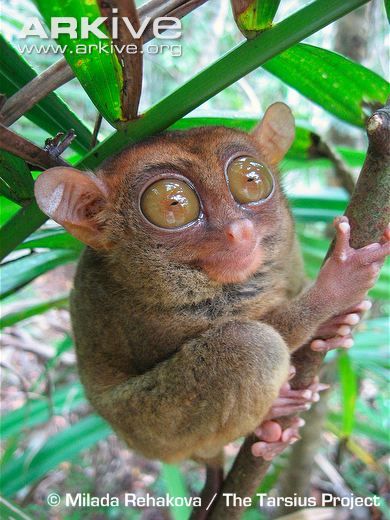
NEXT UP: No.7 seed Tarsier (Tarsius syrichta) vs. No.10 seed Mara (Dolichotis patagonum). #2021MMM 



Genetics & phylogeny content for this #TricksyTaxonomy bout is courtesy of @sexchrlab. #Teamwork #2021MMM
Though it may look to some like "someone put a kangaroo's head on a rabbit's body", the Patagonian Mara, aka the Patagonian Cavy, is neither lagomorph nor marsupial, but one of the world's largest living rodents. #MightyMara #2021MMM
Around 27.5" long (2.05 stoats) & tipping the scales at up to 35 lb (72.16 stoats), Mara's notable physical traits include its long ears (Dolichotis = long-eared in Ancient Greek), long curved back legs (it can run >30mph), & small, hairless tail. #2021MMM 

There is little genetic data on the whole Infraorder of Cavioidea, so while genetics agrees Mara is a rodent, there is still disagreement about the exact relationships among Caviodea species. academic.oup.com/mbe/article/19… #2021MMM
The Phillipine Tarsier, known in local languages as mawumag or magô, is one of the smallest primate species. It measures only 6.3" tall (.64 stoats) & weighs at most 160g (.73 stoats). Discounting its long tail, it's about the size of your fist. #StoatsAsMeasurement #2021MMM 

Tarsiers are named for their elongated ankle bone (tarsus), which enables them to leap up to 3 meters (8.82 stoats) between trees. Look at it go! #SPROING #2021MMM
You may also have noticed that the nocturnal Tarsier has rather large eyes. In fact, they're so big that they're fixed in their sockets. This doesn't hinder Tarsier, though. It can rotate its neck 180° as it hunts insects & small vertebrates. #Peekaboo #2021MMM 

Tarsier may look similar to monkeys, but it isn’t one! Tarsiers are a sister group to anthropoids. By studying shared & unique retrotransposons, geneticists were able to verify which of three hypotheses best fit the evidence. #Sciencing ncbi.nlm.nih.gov/pmc/articles/P… #2021MMM 

Mara is spending a pleasant late afternoon grazing alongside his mate on the open & arid Argentinian grassland (pampas). Maras are monogamous & "the pair bond is maintained almost exclusively by the male, who follows the female wherever she goes." #2021MMM bioone.org/journals/mamma… 

But Mara is in for a surprise, as #MMMagic suddenly transports him to a forest floor on the island province of Bohol in the Philippines! It is twilight, & Tarsier has just emerged from his hidey-hole in the trees above, ready to hunt for his evening meal. #2021MMM 

Mara, disoriented in this dark & humid forest, turns to look for his mate. Maras typically stay "within 10 mara lengths" of their mates (Taber 1987), but she isn't there! #MarasAsMeasurement #2021MMM
Realizing he is separated from his mate, Mara "produces a high-pitched whistle" (Taber 1987) & begins to search his immediate surroundings. #2021MMM ora.ox.ac.uk/objects/uuid:3…
WOOMPF!!! #2021MMM
Tarsier precisely leap ambushes a delicious moth against the tree bark in the forest canopy above Mara! [pictured: Horsfield's Tarsier] #2021MMM 

Below on the forest floor, Mara is growing increasingly distressed by his mate's absence. Female maras are in estrus for only ~1 hour every 3-4 months, so the potential cost of losing track of a mate is high! (Taber 1987). #2021MMM
Mara widens his search radius & gives a "'grumble' contact call" (Taber 1987) #2021MMM
Mara is still unable to see, hear, or smell his missing mate & decides to move farther into the forest....#LookingForLove #NeverGonnaGiveYouUp #2021MMM
....and out of the field of battle!! #2021MMM
TARSIER OUTLASTS MARA!!! #2021MMM
Oh Mara,
Well you came
And you looked for your partner
But she couldn't be found
Oh Mara,
Well you grumbled
And searched even harder
Guess we'll see you around
Oh Mara.
#RIP #2021MMM
Well you came
And you looked for your partner
But she couldn't be found
Oh Mara,
Well you grumbled
And searched even harder
Guess we'll see you around
Oh Mara.
#RIP #2021MMM
• • •
Missing some Tweet in this thread? You can try to
force a refresh













